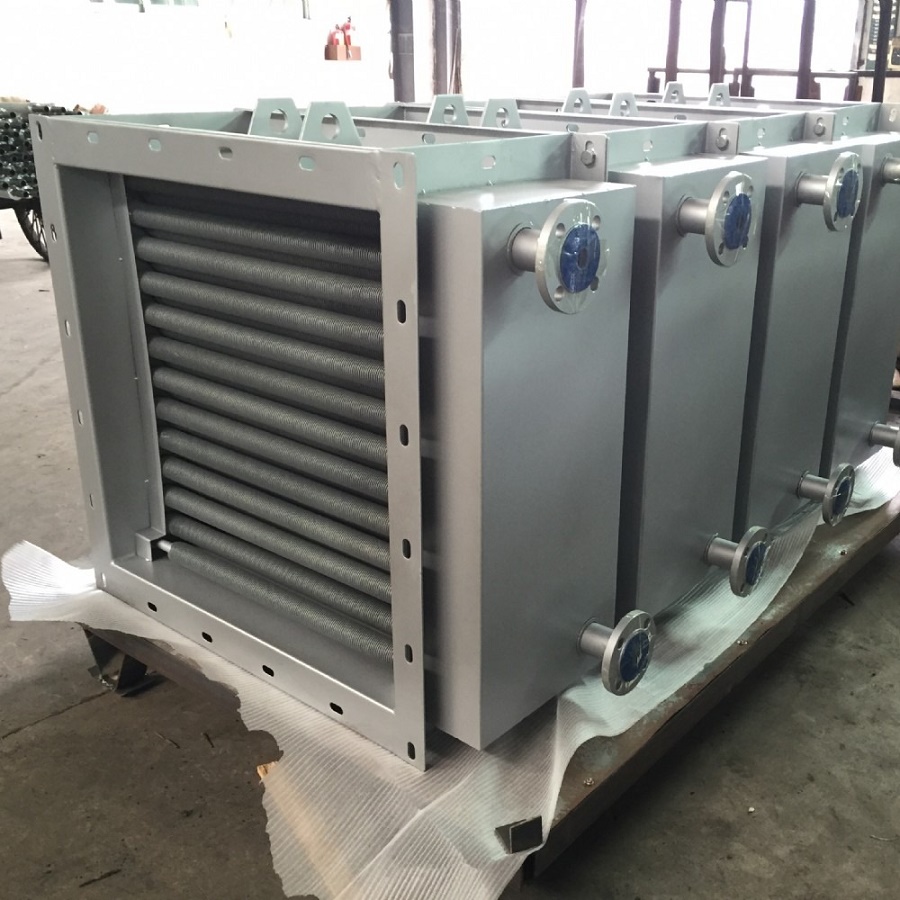Lord Fin Tube-The importance of heat exchanger
The Critical Role of Heat Exchangers in Modern Industry
1. Introduction: The Thermodynamic Workhorse of Industrial Systems
Heat exchangers (HXs) are among the most vital yet underappreciated components in industrial and commercial systems. Responsible for 30-40% of global industrial energy efficiency improvements (IEA, 2023), they enable heat transfer between fluids without mixing—optimizing processes from power generation to food processing. Mostly, the heat exchanger is made of carbon steel and copper tubes in general. These allow swift and very effective transferal of heat and have been used for this particular task since a long period of time now. Due to their effectiveness in the process, these come in handy for high pressure applications as well, which is what makes them a very unique commodity that can be found on high end plants of different industries these days. Moreover, these are also used for liquid of steam and steam to liquid applications, whenever needed. Therefore, it can be easily said that they have many uses, all of which are unique in their own way.
✔ Core engineering principles behind HX operation
✔ Industry-specific applications driving adoption
✔ Cutting-edge innovations enhancing performance
✔ Economic & environmental impact
✔ Future trends in thermal management
2. Engineering Fundamentals: How Heat Exchangers Work
2.1 Thermodynamic Principles Heat exchangers operate on three heat transfer mechanisms:
1. Conduction – Through solid materials (e.g., tube walls)
2. Convection – Fluid-driven heat exchange (forced/natural)
3. Radiation – Minor role in most industrial HXs Key Equation: Heat Transfer Rate (Q)
Q=U×A×ΔTlm U = Overall heat transfer coefficient (W/m²·K) A = Surface area for heat exchange ΔTlm = Log mean temperature difference
2.2 Key Design Considerations
|
Factor |
Impact |
Optimization Strategy |
|
Flow Arrangement |
Parallel vs. counterflow affects efficiency |
Counterflow for max ΔT |
|
Material Selection |
Corrosion resistance, thermal conductivity |
316L SS for chemicals, Cu for HVAC |
|
Fouling Potential |
Reduces efficiency over time |
Turbulent flow designs, anti-fouling coatings |
3. Industry-Specific Applications & Case Studies
3.1 Oil & Gas: Maximizing Refinery Efficiency - Application: Crude oil pre-heating before distillation - HX Type: Shell-and-tube (fixed tube sheet) - Performance: Recovers 1.2 MW waste heat/day, cutting fuel costs by 18% (ExxonMobil case study)
3.2 Pharmaceuticals: Precision Temperature Control - Challenge: Maintaining ±0.5°C in vaccine production - Solution: Double-wall plate HX with CIP (clean-in-place) capability - Outcome: 99.9% sterile reliability (Pfizer audit data)
3.3 Data Centers: Liquid Cooling Revolution - Problem: Air cooling limits server density (>30 kW/rack) - Innovation: Microchannel cold plates with dielectric fluid - Result: PUE (Power Usage Effectiveness) drops from 1.6 → 1.1
4. Economic & Environmental Impact
4.1 Cost-Benefit Analysis
|
X Type |
CAPEX |
OPEX Savings |
Payback Period |
|
Gasketed Plate |
$15k |
$7k/year |
2.1 years |
|
Brazed Plate |
$8k |
$4k/year |
2 years |
|
Shell-and-Tube |
$50k |
$22k/year |
2.3 years |
4.2 Sustainability Benefits - CO₂ Reduction: A single HX in a CHP plant saves 4,800 tons CO₂/year (EPA data) - Water Conservation: Air-cooled HXs cut cooling water use by 3 million gallons/year
5. Emerging Technologies
5.1 Additive Manufacturing - GEs 3D-Printed Compact HX: 20% lighter, 15% higher efficiency - Applications: Aerospace (weight-sensitive systems) 5.2 Smart HXs with IIoT - Real-time monitoring: - Vibration sensors predict bearing failure - Thermal cameras detect hotspots 5.3 Nanofluid Technology - Al₂O₃/water nanofluids: 40% better U-value vs. water - Challenges: Nanoparticle sedimentation (ongoing MIT research)
6. Failure Analysis & Maintenance Best Practices
6.1 Top 3 Failure Modes 1. Stress Corrosion Cracking (Chloride exposure) → Upgrade to duplex steel 2. Tube Erosion (High-velocity fluids) → Install vortex breakers 3. Galvanic Corrosion (Dissimilar metals) → Use insulating gaskets 6.2 Predictive Maintenance Tools - Ultrasonic thickness testing for corrosion mapping - Infrared thermography for fouling detection
7. The Future: Next-Generation Applications
- Fusion Energy: ITERs divertor HXs handle 10 MW/m² heat flux - Hydrogen Economy: Cryogenic HXs for liquid H₂ (-253°C) - Space Exploration: Printed HXs for lunar habitat thermal control The Indispensable Thermal Engine From enabling carbon-neutral industries to powering next-gen tech, heat exchangers remain at the heart of thermal innovation.


